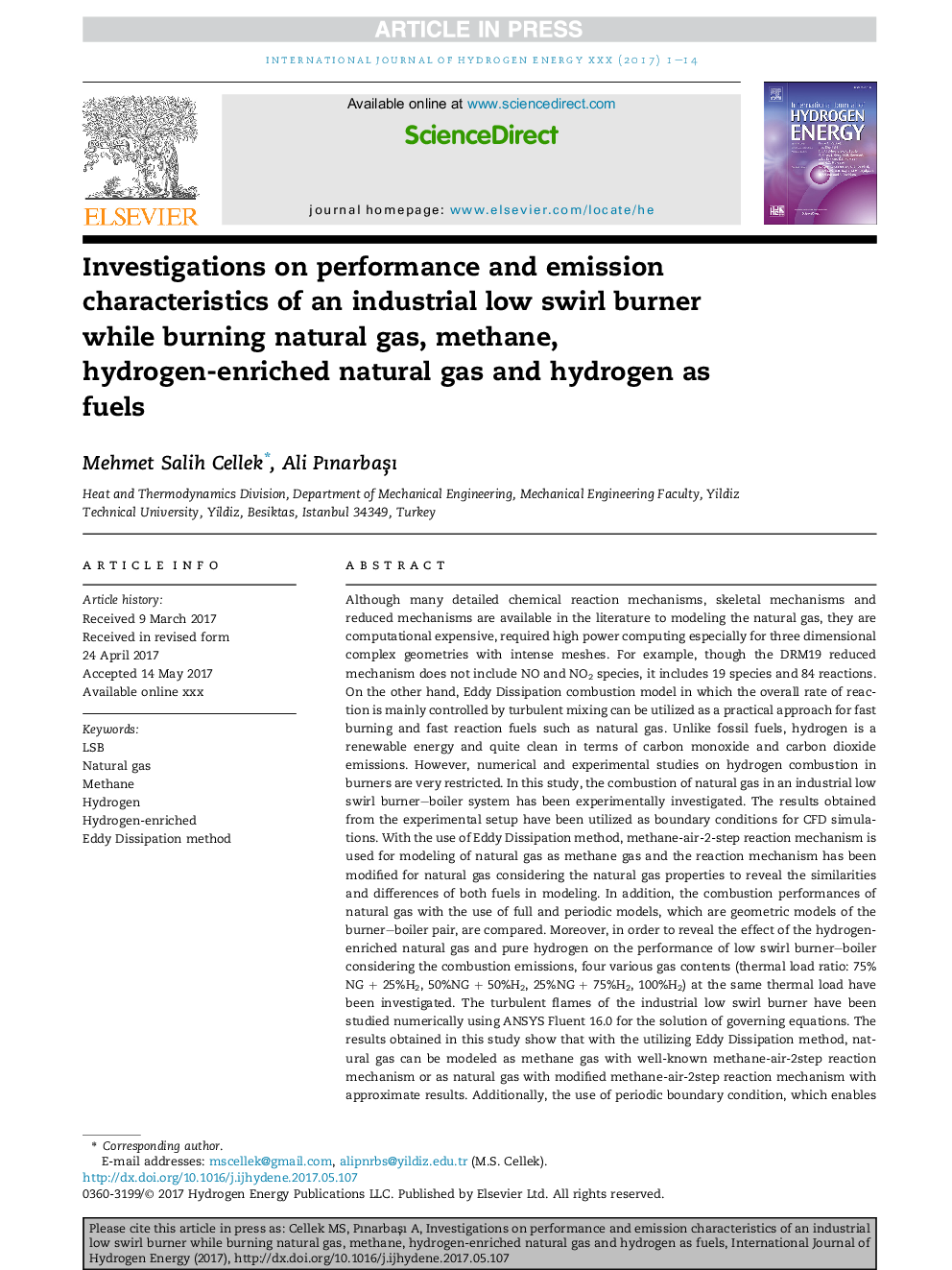| Article ID | Journal | Published Year | Pages | File Type |
|---|---|---|---|---|
| 7708936 | International Journal of Hydrogen Energy | 2018 | 14 Pages |
Abstract
Although many detailed chemical reaction mechanisms, skeletal mechanisms and reduced mechanisms are available in the literature to modeling the natural gas, they are computational expensive, required high power computing especially for three dimensional complex geometries with intense meshes. For example, though the DRM19 reduced mechanism does not include NO and NO2 species, it includes 19 species and 84 reactions. On the other hand, Eddy Dissipation combustion model in which the overall rate of reaction is mainly controlled by turbulent mixing can be utilized as a practical approach for fast burning and fast reaction fuels such as natural gas. Unlike fossil fuels, hydrogen is a renewable energy and quite clean in terms of carbon monoxide and carbon dioxide emissions. However, numerical and experimental studies on hydrogen combustion in burners are very restricted. In this study, the combustion of natural gas in an industrial low swirl burner-boiler system has been experimentally investigated. The results obtained from the experimental setup have been utilized as boundary conditions for CFD simulations. With the use of Eddy Dissipation method, methane-air-2-step reaction mechanism is used for modeling of natural gas as methane gas and the reaction mechanism has been modified for natural gas considering the natural gas properties to reveal the similarities and differences of both fuels in modeling. In addition, the combustion performances of natural gas with the use of full and periodic models, which are geometric models of the burner-boiler pair, are compared. Moreover, in order to reveal the effect of the hydrogen-enriched natural gas and pure hydrogen on the performance of low swirl burner-boiler considering the combustion emissions, four various gas contents (thermal load ratio: 75%NGÂ +Â 25%H2, 50%NGÂ +Â 50%H2, 25%NGÂ +Â 75%H2, 100%H2) at the same thermal load have been investigated. The turbulent flames of the industrial low swirl burner have been studied numerically using ANSYS Fluent 16.0 for the solution of governing equations. The results obtained in this study show that with the utilizing Eddy Dissipation method, natural gas can be modeled as methane gas with well-known methane-air-2step reaction mechanism or as natural gas with modified methane-air-2step reaction mechanism with approximate results. Additionally, the use of periodic boundary condition, which enables studying with 1/4 of geometric model, gives satisfactory results with less number of meshes when compared to the full model. Furthermore, in the case of using hydrogen-enriched natural gas or pure hydrogen instead of natural gas as the fuel, the combustion emissions of the burner-boiler such as CO and CO2 are remarkably decreasing compared to the natural gas. However, the NOx emissions are significantly increasing especially due to thermal NO.
Keywords
Related Topics
Physical Sciences and Engineering
Chemistry
Electrochemistry
Authors
Mehmet Salih Cellek, Ali PınarbaÅı,
